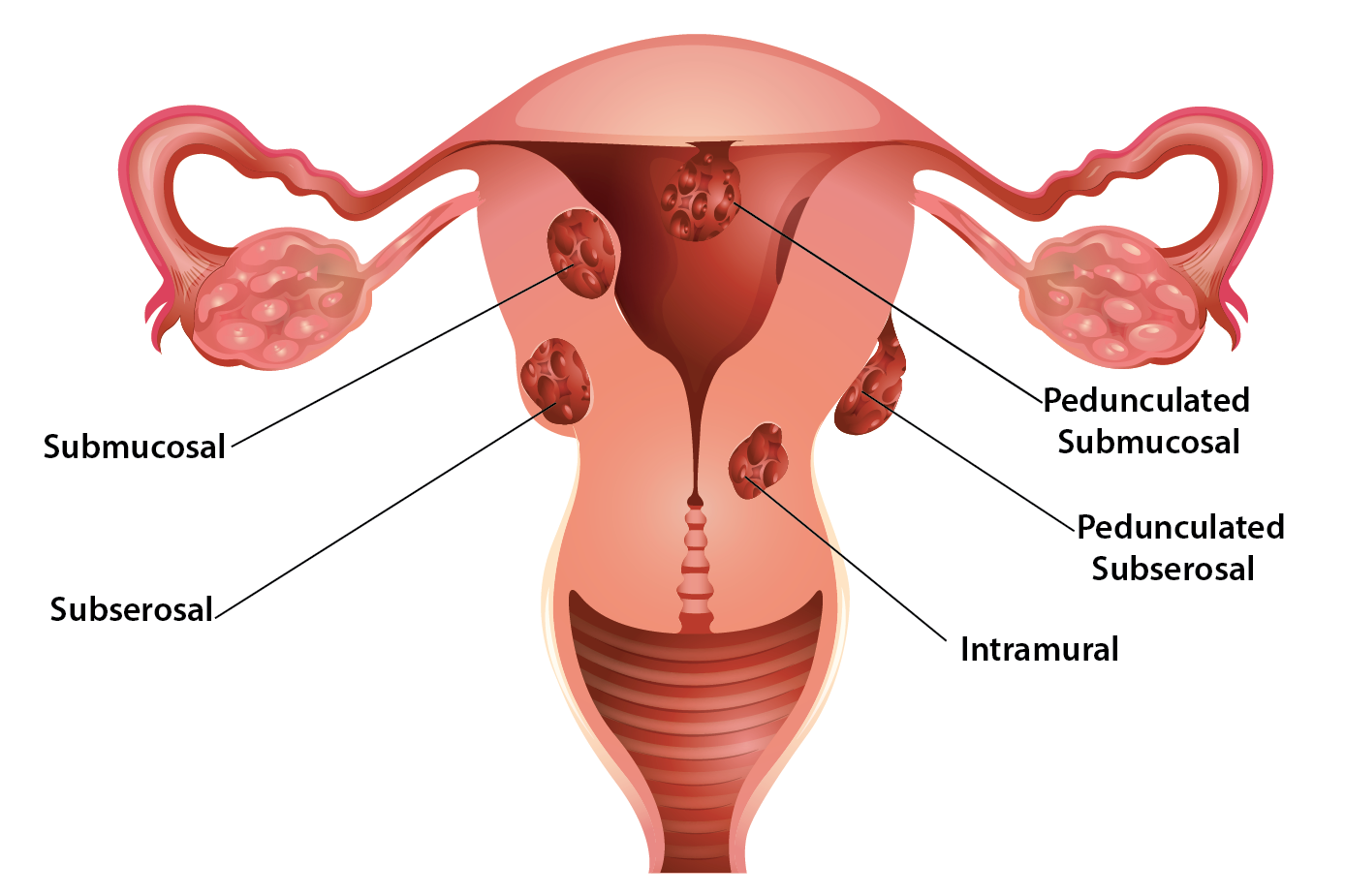Fibroids are common non-cancerous (benign) tumors in the uterus. By the age of 35 years, it is estimated that about 40% of Caucasian women and up to 60% of African American women will have uterine fibroids. Chances of developing them are also increased if a woman is heavy or if other members of her family have been diagnosed with them. Fibroids can range in size from tiny to large.
Fibroids are made up of muscle and have a large supply of blood to them. No-one knows for sure what causes fibroids but they are certainly influenced by hormones and most likely to grow faster when estrogen is highest in a woman’s middle life.
What are the risk factors for uterine fibroids?
- Genetics
- Race
- Obesity
- High estrogen levels
What are the symptoms of uterine fibroids?
While many women have mild or no symptoms at all, others have significant symptoms that are lifestyle limiting or debilitating.
- Severe pelvic pain
- Heave and/ or frequent menstrual periods, which may lead to significant anemia
- Menstrual blood clots
- Painful menstrual periods
- Pain during or after sexual intercourse
- Abdominal bloating
- Frequent urination due to pressure on the urinary bladder
- Constipation due to pressure on the rectum (tail end of the bowel)
What are the types of uterine fibroids?
Symptoms may vary depending on the type of fibroids a woman has.
- Intramural fibroids – These grow within the uterus wall. Typical symptoms are pelvic pain, irregular periods and heavy bleeding
- Submucosal fibroids – These grow just beneath the inner uterus lining (endometrium.) Typical symptoms are heavy menstrual bleeding, anemia, and pelvic and back pain
- Subserosal fibroids – These grow towards the outer part of the uterus and bulge into the pelvic or abdominal cavity. These tend to cause pressure-related symptoms, such as, frequent urination and constipation
- Pedunculated fibroids – These hang into the uterine cavity or outside by means of a stalk. Depending on where they occur, symptoms may vary.
How are uterine fibroids diagnosed?
Many other conditions may have symptoms mimicking uterine fibroids. If you have any of the symptoms, it is important to see your doctor.
Some of methods by which uterine fibroids are diagnosed are:
- Pelvis exam – Doctors might feel the fibroid or an enlarged uterus
- Ultrasound – Usually the first imaging study that is done which might include an internal scan called Transvaginal ultrasound.
- MRI – Provides excellent information of number, location and size of the fibroids.
How are uterine fibroids treated?
Initially, many women are treated medically. Unfortunately, many of them might continue to have significant symptoms. While surgery, in the form of hysterectomy (removal of the uterus) or myomectomy (removal of a fibroid, usually the largest one) have been traditionally performed, Uterine Artery (Fibroid) Embolization (UAE/ UFE) procedure is a much less invasive option. This involves blocking the blood supply to the fibroids, shrinking them and improving symptoms.
Uterine Artery Embolization is performed by highly qualified Interventional Radiologists. We, at Mara Vascular and Interventional Radiology, have the expertise to perform the procedure in a safe and effective manner.
Advantages of Uterine Artery Embolization (UAE), compared to fibroid surgery, are:
- Minimally invasive with no scarring
- Highly effective with high success rate (about 85-90%)
- Can be performed as an out-patient procedure
- Uterus is preserved
- Much shorter recovery time
- Less risk of infection and bleeding
- Less pain than after surgery
- Performed under sedation; can avoid general anesthesia and associated risks
Uterine Artery (Fibroid) Embolization


